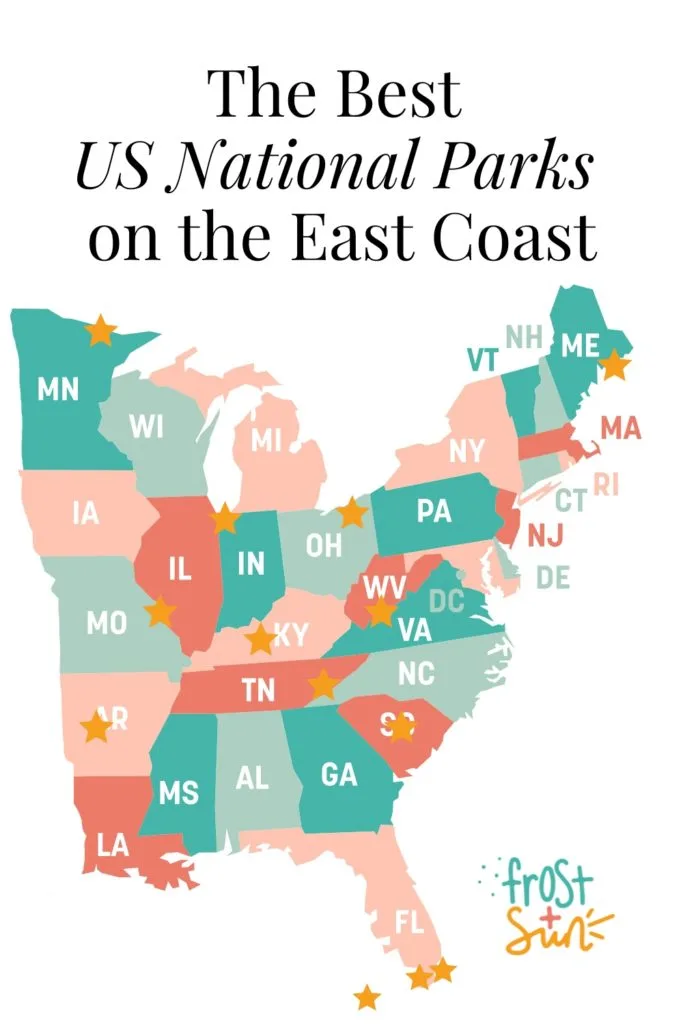I love spending time in the great outdoors – and if you’re reading this, I bet you do too.
If you’ll be visiting the Eastern coast of the United States, I highly recommend checking out one of the beautiful national parks nearby.
Keep reading for my list of the best national parks on the East coast, from Maine all the way down to Florida.
Best national parks on the East coast
If we consider the literal definition, there are 5 national parks on the east coast: Acadia, Biscayne, Congaree, Dry Tortugas, and Everglades.
However, for the purpose of this post, I’m going to split the US in half and include any state surrounding the Mississippi River and over to the east.
The National Park Service manages multi-state trails, historical sites and monuments, seashores, and other important landmarks. That said, I’m only listing national parks within this list.
With the guidelines I’ve outlined above, there are 15 national parks on the east coast.
OK, now that we have that out of the way, let’s get into this list of the best east coast national parks.
Acadia National Park
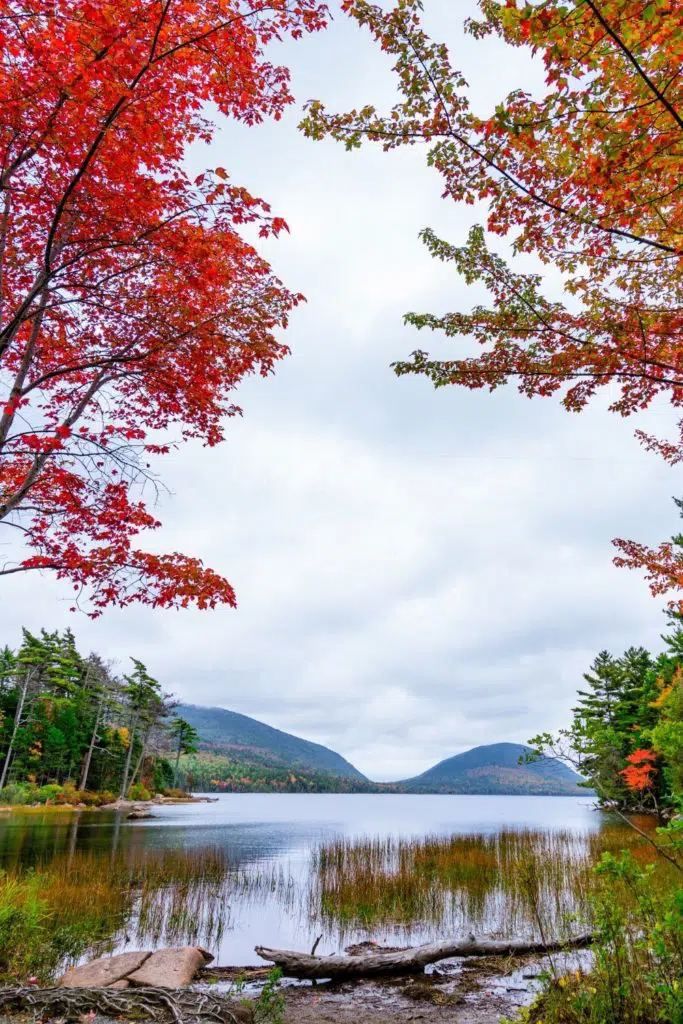
By far my favorite national park on the east coast is Acadia National Park on the coast of Maine.
Acadia was initially created as Sieur de Monts National Monument on July 8, 1916.
It became Lafayette National Park on February 26, 1919 and renamed Acadia National Park on January 29, 1929.
This gorgeous New England park holds a special place in my heart, as it is located in the Bar Harbor, Maine area, where my grandmother grew up.
I’ve spent many family vacations at Acadia – and in fact, as I write this post, I’m preparing for yet another trip in a week.
Some of my favorite spots include Bar Island, Sand Beach, Little Hunters Beach, Thunder Hole, Jordan Pond, and taking boat tours in Frenchman Bay.
Acadia National Park encompasses much of Mount Desert Island, Isle au Haut, and the Schoodic Peninsula in Knox and Hancock counties.
It is made up of many beaches, rocky coastlines, miles of hiking trails, and epic views from atop Cadillac Mountain. Biking is also a very popular activity.
Key facts
- Location: Maine
- Size: 49,075 acres
- Highest Point: 1,528 ft at Cadillac Mountain
- Nearest Airport: Hancock County-Bar Harbor Airport (BHB)
- Entrance Fee: $15-30 for 7 days; $55 for annual pass
- Additional Resources: Maps / Activities / Lodging / Restaurants & Cafés / Bars / Hikes
Biscayne National Park
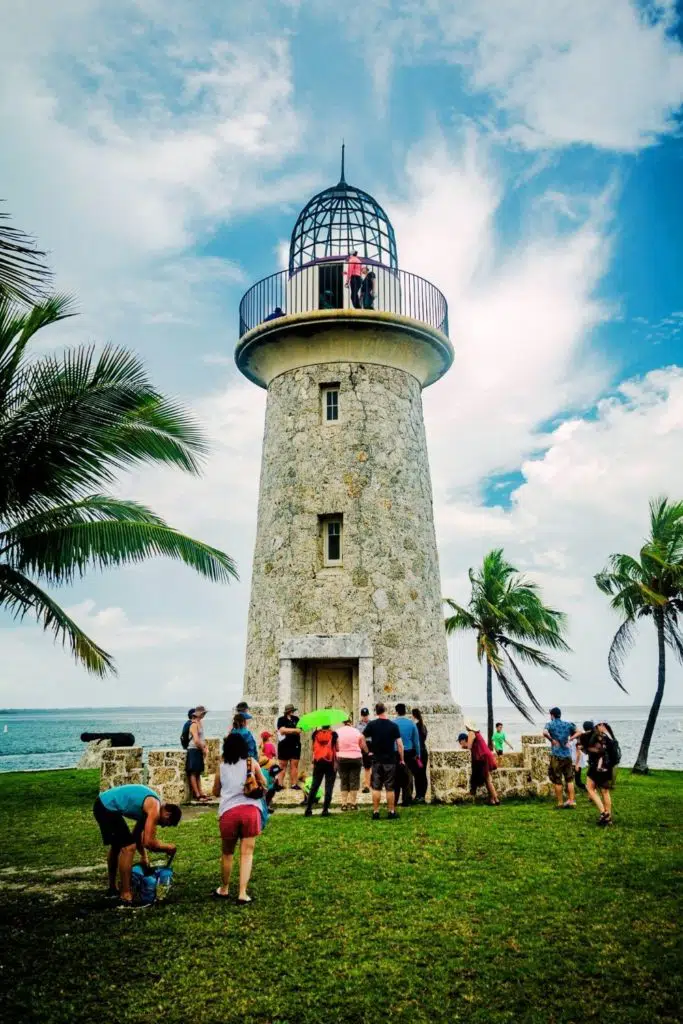
Biscayne National Park in the Florida Keys is great for kayaking, fishing, boating, and other water activities. It was established on June 28, 1980.
However, the most unique thing to do at Biscayne National Park is the Maritime Heritage Trail, an underwater trail that links historical shipwrecks and lighthouses.
Yes, that’s right: underwater. Leave your hiking boots at home and pack your scuba gear instead!
Bottom line: If you love being out or in the water, Biscayne National Park is perfect for you. In fact, 95% of this park is water!
Key facts
- Location: Florida
- Size: 172,971 acres
- Highest Point: 9 feet above sea level
- Nearest Airport: Miami International Airport (MIA)
- Entrance Fee: Free
- Resources: Maps
Congaree National Park
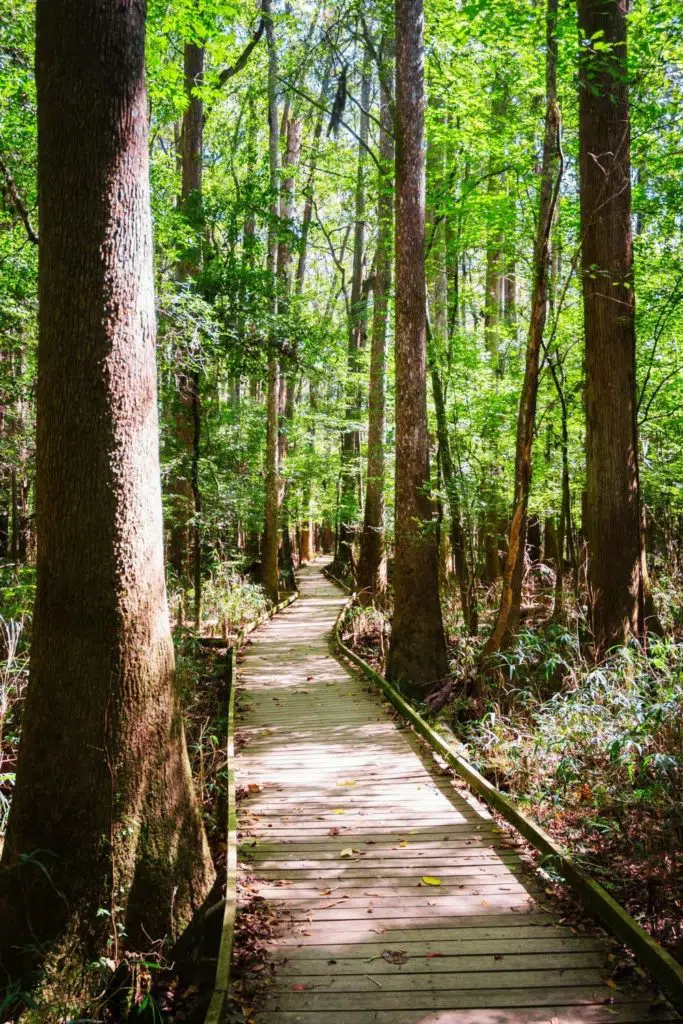
Located about 18 miles southeast of Columbia in South Carolina, Congaree National Park is filled with hiking trails, water trails for canoeing, lots of opportunities for wildlife viewing, and hike-in campsites. It was established November 10, 2003.
Congaree National Park also includes a UNESCO-designated biosphere reserve due to its unique natural resources that have developed one of the highest forests in the world.
Its long cultural history, including indigenous American life, the freedom of enslaved African Americans, and the Revolutionary war was also a major factor in the protection of this land.
Perhaps its most unique feature is that for approximately 2 weeks between May and June, it becomes home to synchronous flashing fireflies that put on a show while trying to find a mate. It’s as if you’re on the planet of Pandora!
Key facts
- Location: South Carolina
- Size: 26,693 acres
- Highest Point: 140 feet above sea level
- Nearest Airport: Columbia Metropolitan Airport (CAE)
- Entrance Fee: FREE
- Resources: Maps
Cuyahoga Valley National Park
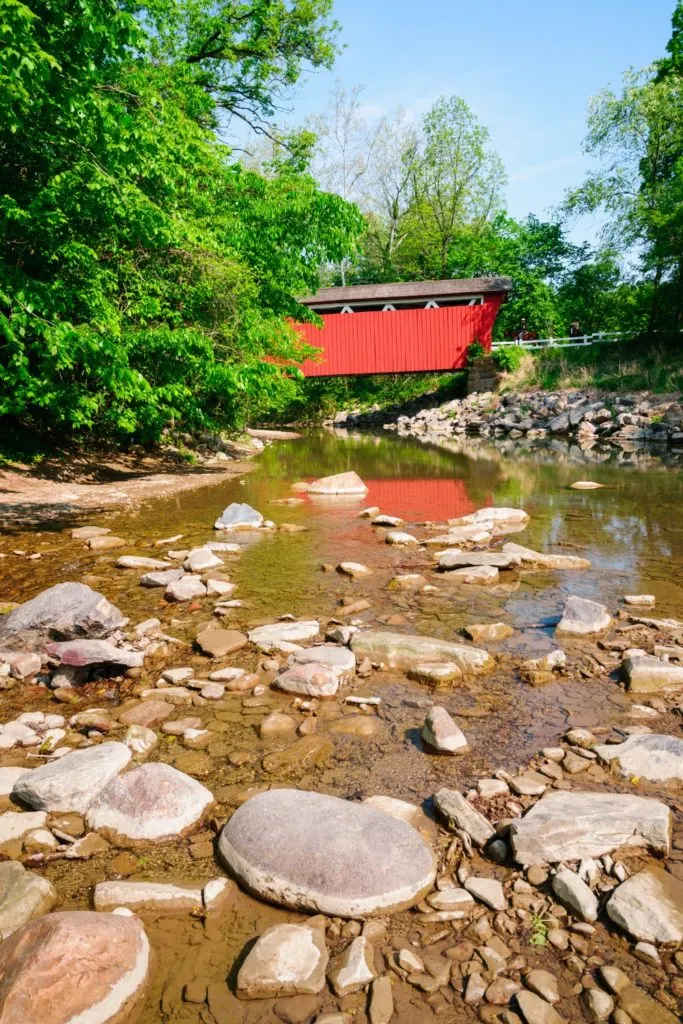
Cuyahoga Valley National Park, also sometimes informally called Cuyahoga River National Park, is located just outside Cleveland, Ohio.
It was established December 27, 1974 as a national recreation area and upgraded to a national park on October 11, 2000.
Popular activities include biking, hiking, canoeing, kayaking, fishing, horseback riding, and questing (like geocaching, but sans-GPS).
It is also well known for its scenic railroad, which is stunning in the Fall season.
Key facts
- Location: Ohio
- Size: 32,572 acres
- Nearest Airport: Cleveland Hopkins International Airport (CLE)
- Entrance Fee: Free
- Additional Resources: Maps
Dry Tortugas National Park
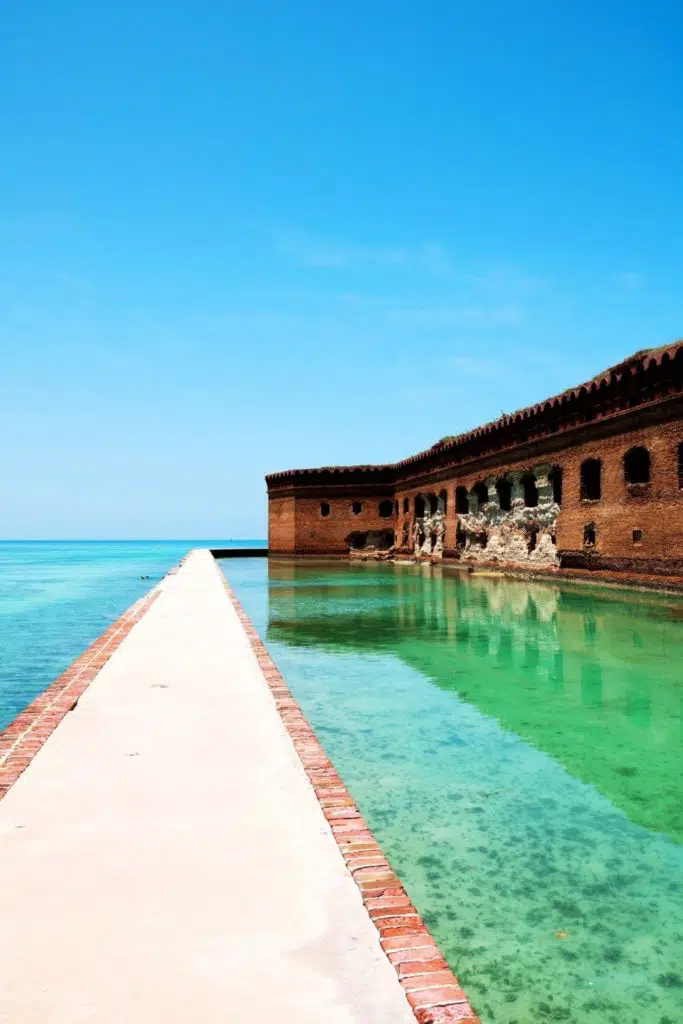
Dry Tortugas National Park is a tiny (100 square miles) park located in the Florida Keys. It was established on January 4, 1935.
It is made up of a handful of small islands, with only 1% of the park on dry land. Thus, it can only be reached by ferry, boat or seaplane.
Swimming, snorkeling, boating, and fishing are all popular activities at Dry Tortugas. Coral reefs are prevalent in the area, which can be seen when partaking in water activities.
A small campground is also available on Garden Key. It does not accept reservations, except for its group sites. Therefore, it’s first come, first serve!
Lastly, Dry Tortugas National Park is home to Fort Jefferson, a large abandoned fort built in the 19th century as a rest stop for boats and ships to refuel, protect themselves during storms, or for the US military to launch missions if needed.
Key facts
- Location: Florida
- Size: 64, 701 acres
- Highest Point: 10 ft.
- Nearest Airport: Key West International Airport (EYW)
- Entrance Fee: $15 per person for 7 days. Free for all visitors ages 16 and under.
- Resources: Maps
Everglades National Park
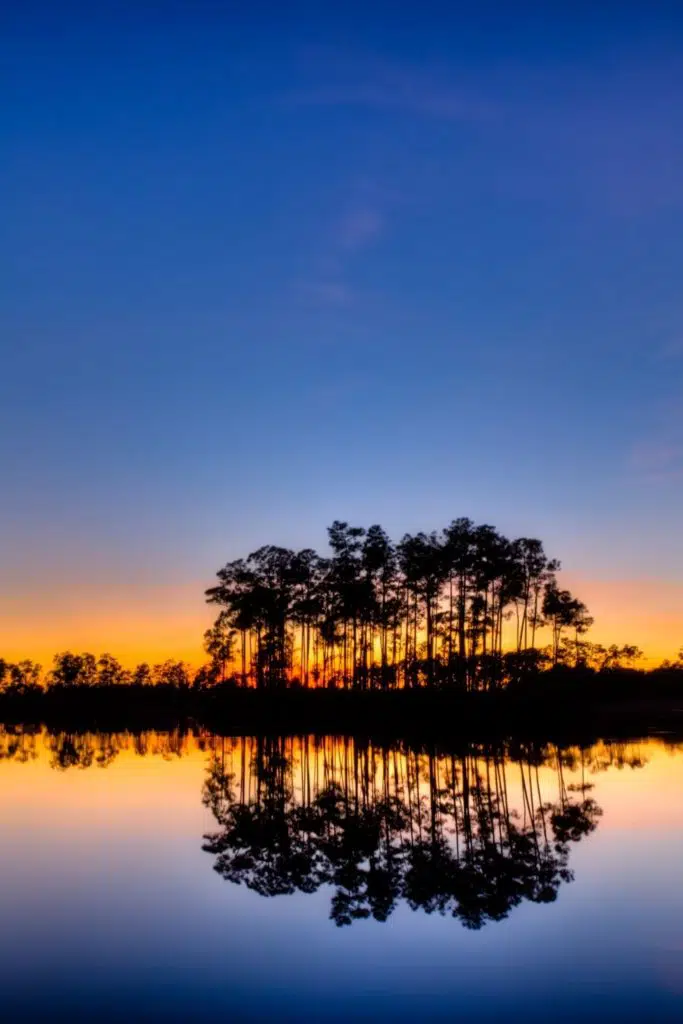
Everglades National Park is the last of 3 national parks in Florida. It was established on December 6, 1947.
Located in South Florida, the Everglades is a great spot for hiking, biking, canoeing, kayaking, bird watching, wildlife watching, and camping.
It is made up of over 1.5 million acres of wetlands and is the third largest national park in the US.
The Everglades is arguably one of the most unique national parks on the east coast, maybe even in all of the National Park Service system!
If you’re lucky, you might catch a glimpse of alligators, Florida panthers, Loggerhead sea turtles, or West Indian manatees.
Lastly, like Congaree National Park, much of the land in the Everglades is a UNESCO-designated biosphere reserve.
Key facts
- Location: Florida
- Size: ~1.5 million acres
- Highest Point: 25 ft.
- Nearest Airport: Miami International Airport (MIA)
- Entrance Fee: $15-30 for 7 days; $55 for an annual pass
- Resources: Maps
Gateway Arch National Park
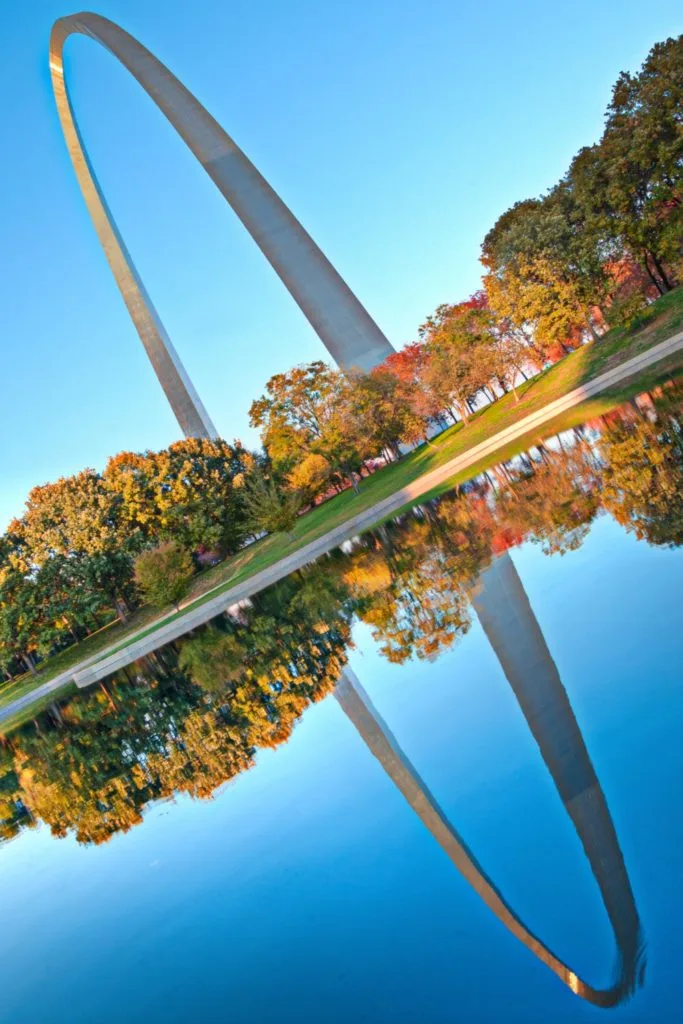
Gateway Arch National Park is located in St. Louis, Missouri. It was established on December 21, 1935 as Jefferson National Expansion Memorial and upgraded to a national park on February 22, 2018.
The park consists of 2 main attractions, the Gateway Arch and Old Courthouse.
The Gateway Arch is an enormous arch with sweeping views of greater St. Louis. It represents a gate to the West.
The Old Courthouse is the site of the Dred Scott v. Sanford case in 1846. Dred, a Black enslaved man, sued for the freedom of himself, his wife Harriet, and their 2 children, but lost. However, they were ultimately freed a few months later.
The park grounds and a museum are free to access, but there is a fee to access the Gateway Arch, Old Courthouse, river cruise, and a film.
| Attraction | Adult (16+) | Child (3-15) | America the Beautiful Pass |
| Monument to Dream | $7 | $3 | $4 |
| Gateway Arch tram ride | $15+ | $11+ | $12+ |
| St. Louise riverboat cruise | $24+ | $14 | No discount |
| Tram & film | $19+ | $14+ | $16+ |
| Tram & cruise | $37+ | $23+ | $34+ |
| Tram, film & cruise | $41+ | $26+ | $38+ |
Key facts
- Location: Missouri
- Size: 91 acres
- Nearest Airport: St. Louis
- Entrance Fee: varies, see chart above
- Additional Resources: Maps
Great Smoky Mountains National Park

Great Smoky Mountains National Park crosses between North Carolina and Tennessee. It was established June 15, 1934.
It is well known for hiking, camping (both hike-in and car camping), fishing, and landscapes.
Speaking of landscapes, if you’re ever in the southeastern part of the US in the Fall, head to Great Smoky Mountains National Park for prime Fall foliage viewing.
Aside from multiple campgrounds within park grounds, LeConte Lodge provides housing for hikers who reach the top of Mount LeConte.
That said, if you’re not into roughing it, check out the nearby town of Gatlinburg, TN.
Gatlinburg is packed with adorable cabins, bed & breakfasts, and hotels to rest your head.
BONUS: Just 30 minutes north is Dollywood, a theme park partially owned by Dolly Parton.
Key facts
- Location: between North Carolina & Tennesee
- Size: 522,419 acres
- Highest Peak: 6643 ft at Clingmans Dome
- Nearest Airport: McGhee-Tyson Airport (TYS) in TN & Asheville Regional Airport (AVL) in SC
- Entrance Fee: $5 for 1 day; $15 for 7 days; $40 for an annual pass
- Resources: Maps
Hot Springs National Park
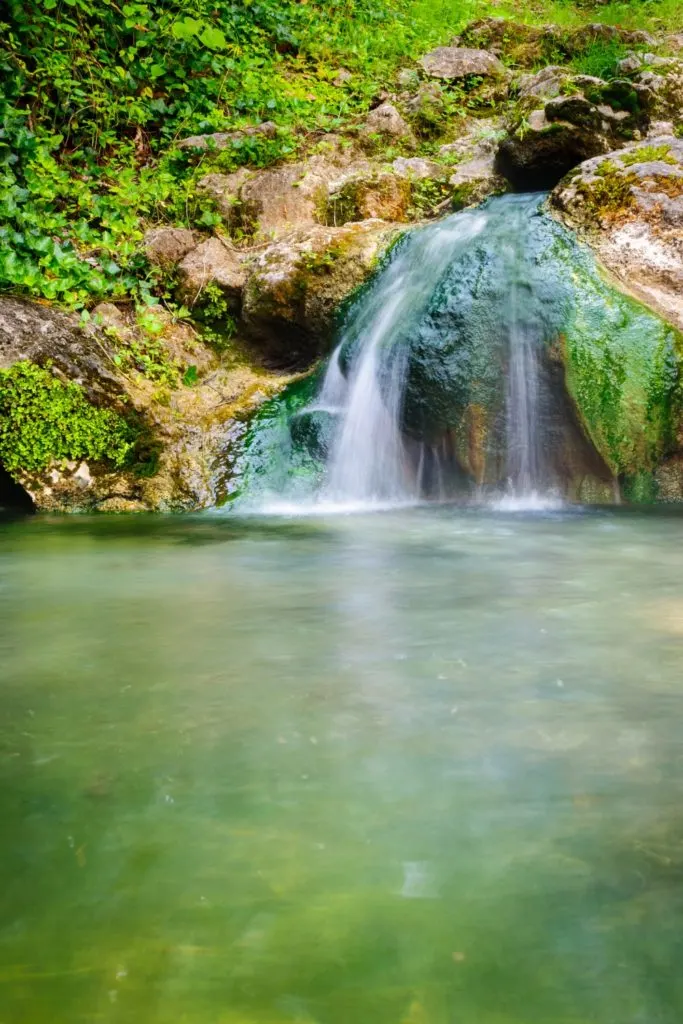
Hot Springs National Park is a unique park in that its premiere attraction are its bathhouses, rather than its land.
It was originally created as a recreation area on April 20, 1832 and upgraded to national park on March 4, 1921.
In its heyday, there were 2 dozen bathhouses that utilized thermal spring water from the nearby land.
Today, 8 of the buildings stand, with only 2 of them still operating as a bathhouse: Buckstaff and Quapaw. Buckstaff is the only bathhouse to remain open since its inception.
Guests cannot bathe in the thermal springs directly, but you can visit them and touch the water.
Entrance to the park is free, but there are fees associated with services at the Buckstaff and Quapaw Bathhouses.
Key facts
- Location: Arkansas
- Size: 5,550 acres
- Nearest Airport: Little Rock National Airport (LIT)
- Entrance Fee: Free
- Additional Resources: Maps
Indiana Dunes National Park
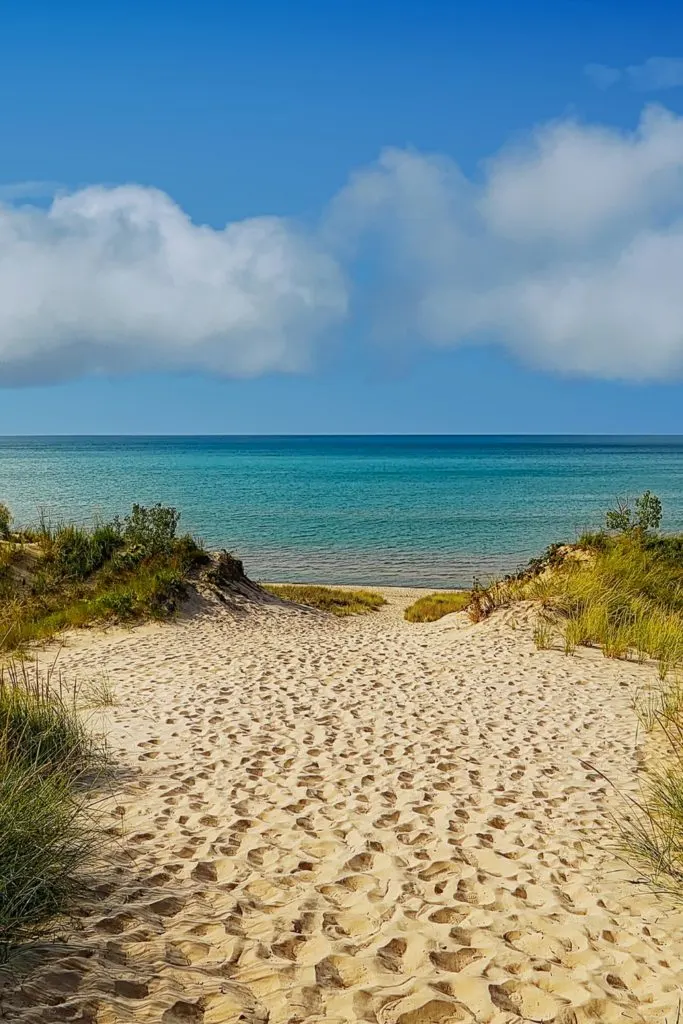
Indiana Dunes National Park sits on the southern shore of Lake Michigan in Indiana.
It was originally established as Indiana Dunes National Lakeshore on November 5, 1966 and upgraded to a national park on February 15, 2019.
Indiana Dunes National Park’s name is a bit misleading, as it is made up of more than just sand dunes.
It also includes prairies, bogs, a marsh, woods, and swamps. There’s also a pioneer homestead, a farm, a cemetery, and 3 Lustron prefabricated homes from the post-World War II era.
This slept-upon park preserves history just as much as it does nature!
Key facts
- Location: Indiana
- Size: 14,349 acres
- Nearest Airport: Midway International Airport (MDW) & O’Hare International Airport (ORD)
- Entrance Fee: $15-25 for 7 days; $45 for an annual pass
- Additional Resources: Maps
Isle Royale National Park
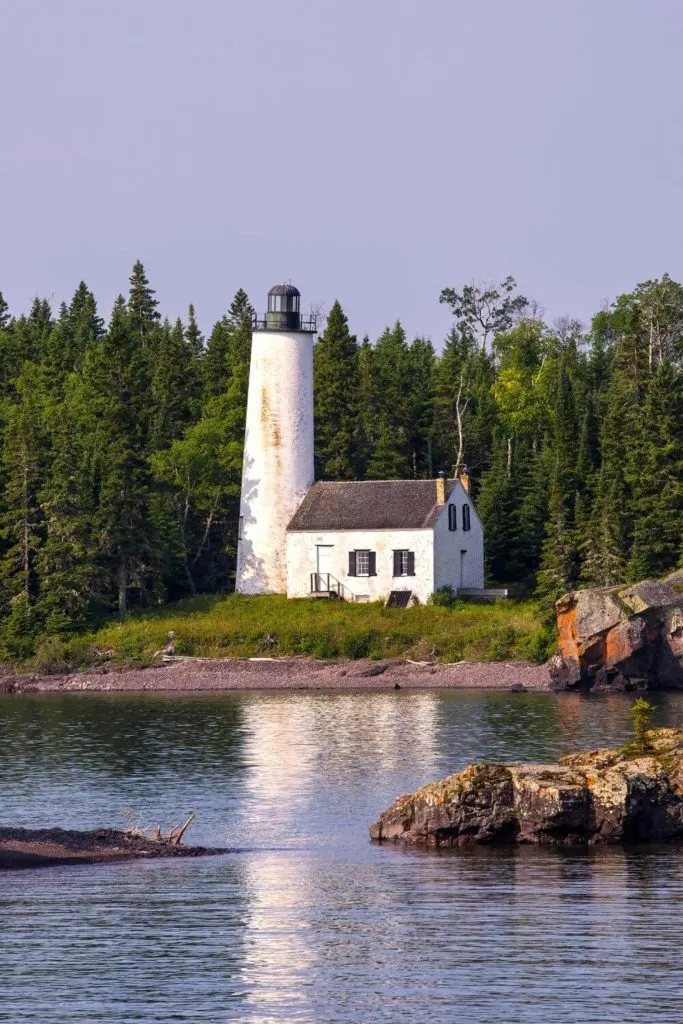
This chain of islands and national park is nestled in Lake Superior near the border of Canada. It can only be accessed by ferry, seaplane, or private boat.
Although the name of the main island is Isle Royale in English, it is also known as Minong by the native Ojibwe people.
Hiking, fishing, canoeing, kayaking, boating, and scuba diving are all popular activities here. Camping is also allowed, as is staying overnight in a docked boat.
What I love about this remote park is its artist-in-residence program.
While many national parks have this type of program, Isle Royale also has a teen artist program! I love that they support younger artists who are just getting a start and perhaps building a portfolio.
Key facts
- Location: Michigan
- Size: 571,790 acres
- Nearest Airport: Houghton County Memorial Airport (CMX)
- Entrance Fee: $7 per person per day, payable by credit card only
- Additional Resources: Maps
Mammoth Cave National Park
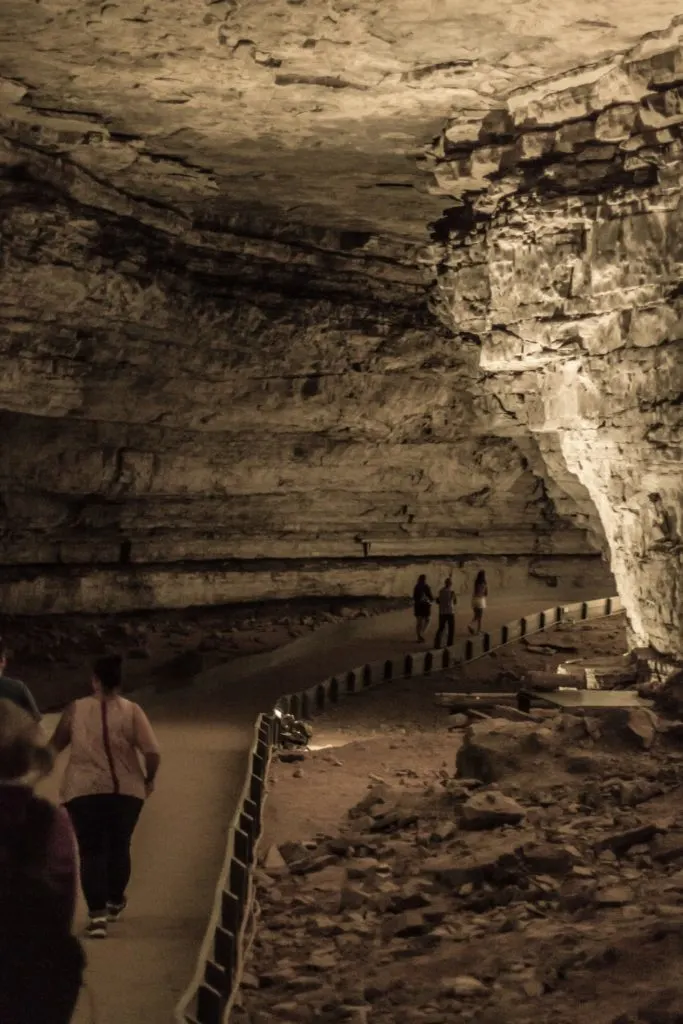
Mammoth Cave National Park is the longest cave system in the world with 426 miles of caves – nearly double the length of the second longest cave system.
It was established as a national park on July 1, 1941, nearly 20 years after local citizens started campaigning for it to be bestowed with this honor.
Mammoth Cave National Park is also a UNESCO World Heritage Site (1981), an international Biosphere Reserve (1990), and an International Dark Sky Park (2021).
Popular activities include stargazing, canoeing, kayaking, boating, and touring the caves.
Key facts
- Location: Kentucky
- Size: 52,830 acres
- Nearest Airport: Louisville Muhammad Ali International Airport (SDF) & Nashville International Airport (BNA)
- Entrance Fee: Free, except cave tours
- Additional Resources: Maps / Cave Tours
New River Gorge National Park
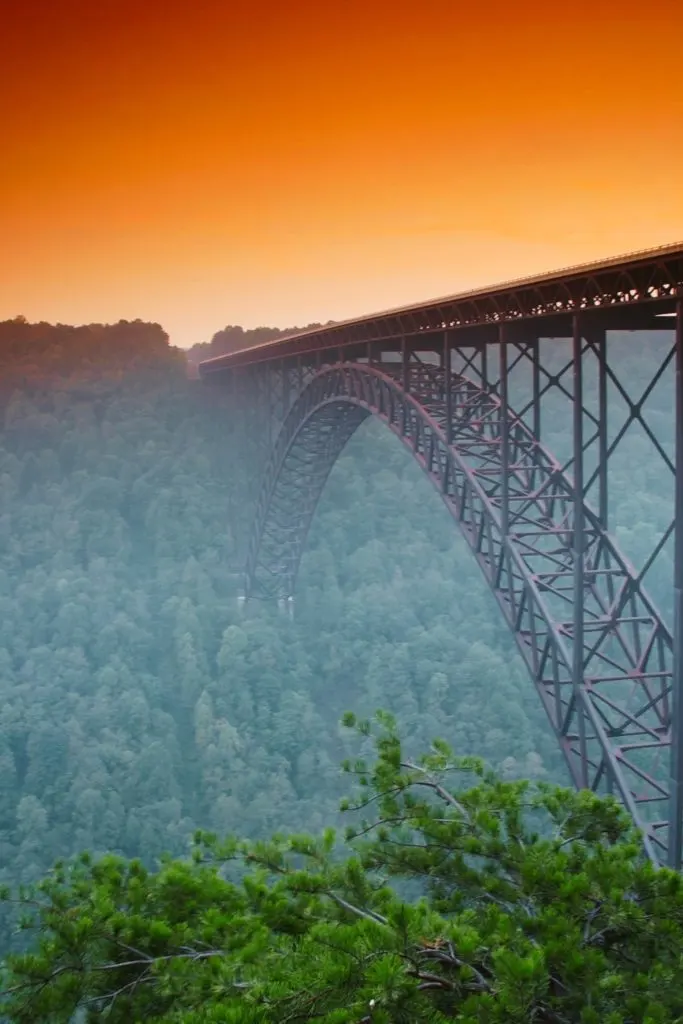
New River Gorge National Park in West Virginia is the newest national park on the east coast.
It was originally established as a national river on November 10, 1978, but was upgraded to a national park on December 27, 2020.
Popular activities include fishing, hiking, hunting*, rock climbing, and white water rafting.
It is also the home to Bridge Day, where people go BASEjumping from the New River Gorge Bridge.
If you’re not brave enough to jump off the bridge, but still want to witness its magnificence, add the Canyon Rim Visitor Center or Long Point Trail, both of which have great views of the bridge, to your itinerary.
*Permit required.
Key facts
- Location: West Virginia
- Size: 72,808 acres
- Nearest Airport: Raleigh County Memorial Airport (BKW)
- Entrance Fee: Free
- Additional Resources: Maps
Shenandoah National Park
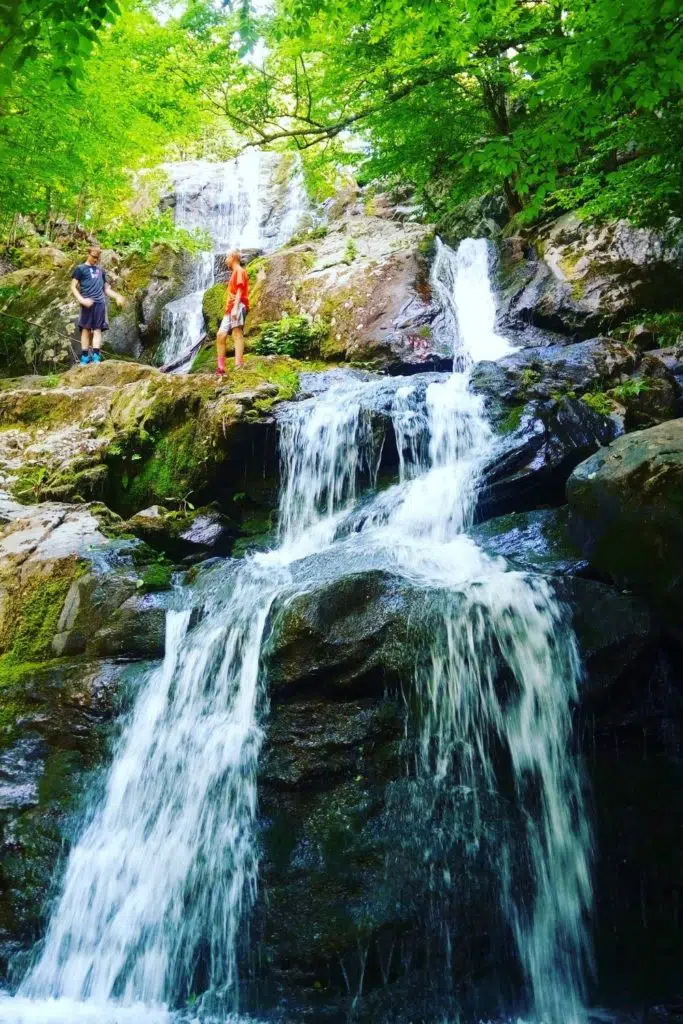
Last up for this list of the best east coast national parks is Shenandoah National Park in Virginia, which was established December 26, 1935.
This lovely park is located a little over an hour from Washington, DC, making it an excellent day trip for those visiting the capital of the US
As with other national parks, hiking, fishing, biking, and hike-in camping are all popular activities at Shenandoah National Park.
In addition to camping, rustic cabins and lodges are also available within the park.
Finally, Shenandoah National park is also well-known for its 9 waterfalls.
The east coast isn’t exactly well-known for waterfalls, so this is a rare find on the east coast!
Key facts
- Location: Virginia
- Size: 199,173 acres
- Highest Peak: 4050 ft at Hawksbill Mountain
- Nearest Airport: Washington Dulles International (IAD) with smaller, less accessible regional airports available
- Entrance Fee: $15-30 for 7 days; $55 for an annual pass
- Resources: Maps
Voyageurs National Park
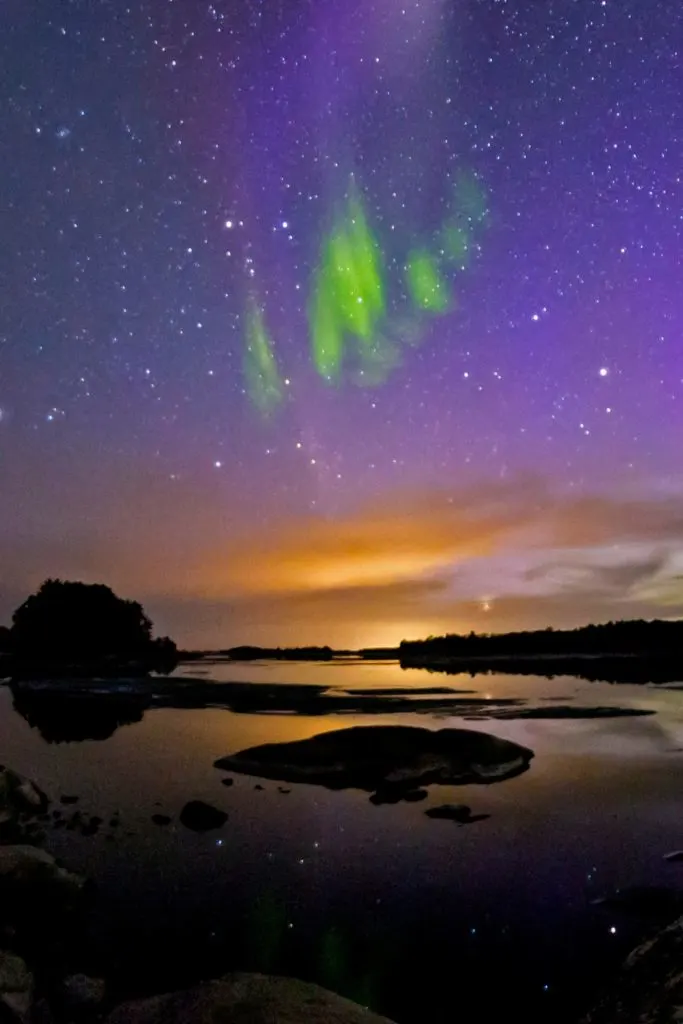
Voyageurs National Park is in northern Minnesota near the Canadian border, and much of the park is only accessible via water. It was established on April 8, 1975.
Popular activities include boating, canoeing, kayaking, fishing, houseboating, stargazing, and snowmobiling.
Its most unique feature is that it is one of few places where you can see the Aurora Borealis, or Northern Lights.
Voyageurs National Park gets its name from the French-Canadian fur traders, known as voyageurs, who frequently traveled through the area in the 18th and early 19th centuries.
Key facts
- Location: Minnesota
- Size: 218,055 acres
- Nearest Airport: Falls International Airport
- Entrance Fee: Free
- Additional Resources: Maps
BONUS: The Appalachian Trail
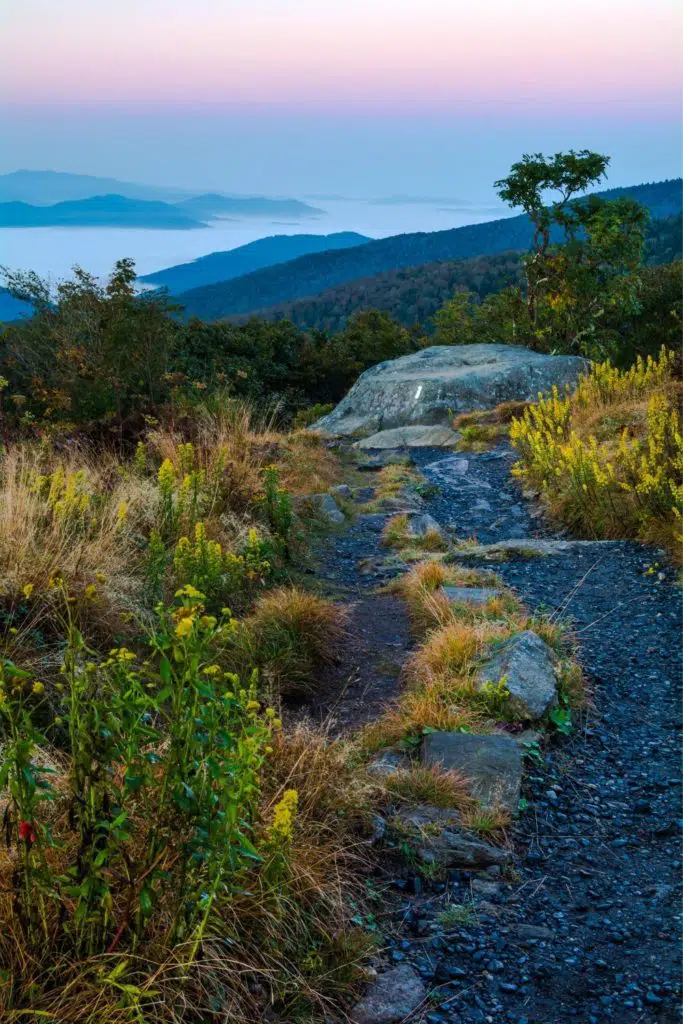
While the Appalachian Trail is not a national park, it is a national trail.
Plus, if you’re interested in national parks on the east coast, then I bet you’ll be interested in learning about this famous trail!
Why, you ask?
The Appalachian Trail stretches along nearly every state on the actual east coast, from Springer Mountain in Georgia to Mount Katahdin in Maine, including Shenandoah National Park and Great Smoky Mountains National Park.
It is the longest trail in the world, measuring a total of 2,181 miles.
What is your favorite national park on the east coast?
I hope you’ll be visiting national parks on the east coast sometime soon.
Drop a comment below to let me know which park you’ve visited!
About the author

Meg Frost is a Boston-based travel blogger that helps people embrace technology to make vacation planning and traveling wicked easy, affordable, and fun.
She holds an M.A. in Journalism from Northeastern University and B.S. in Communication & American Studies from University of Miami.
This post was originally published August 6, 2021. It was last updated November 12, 2022.


